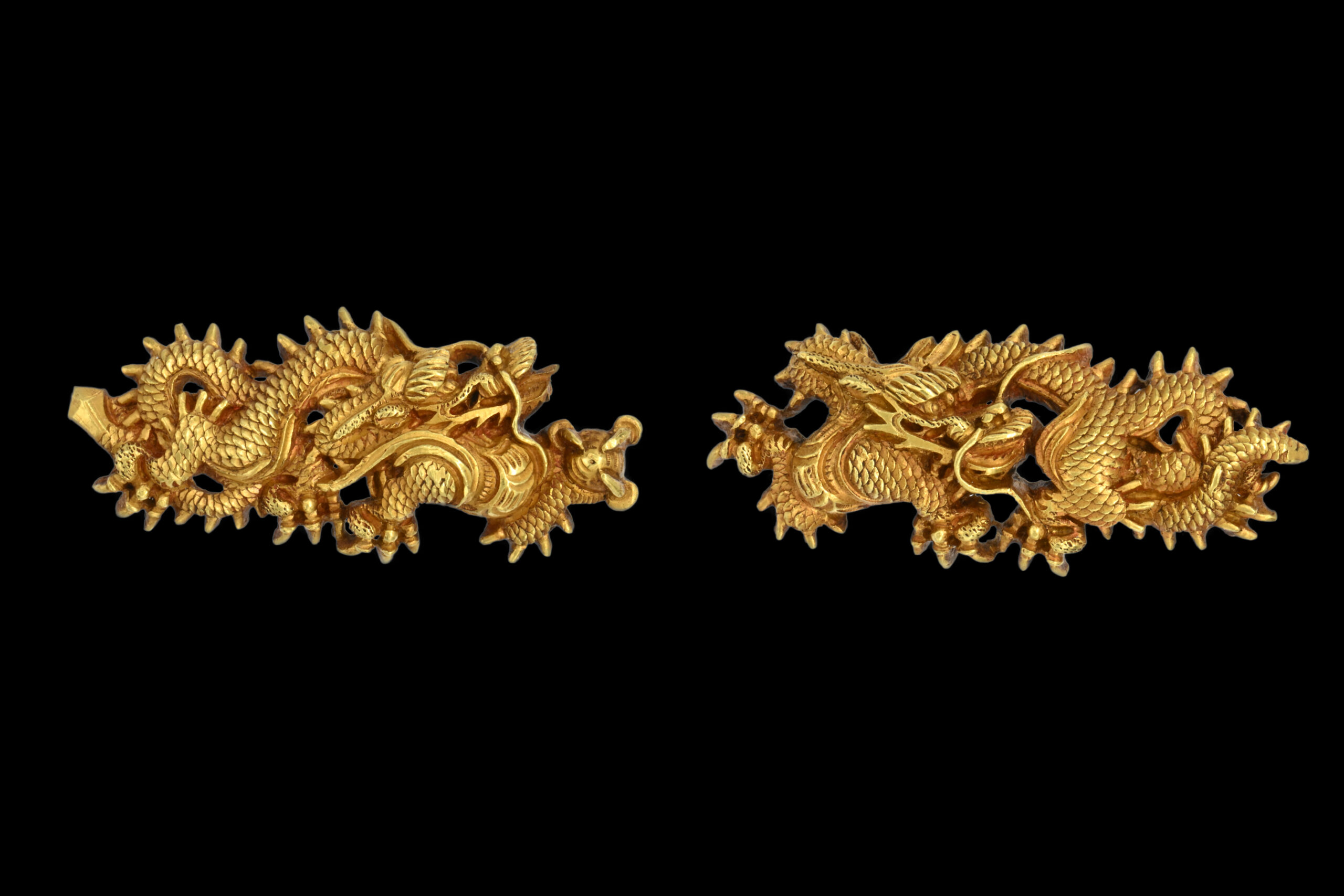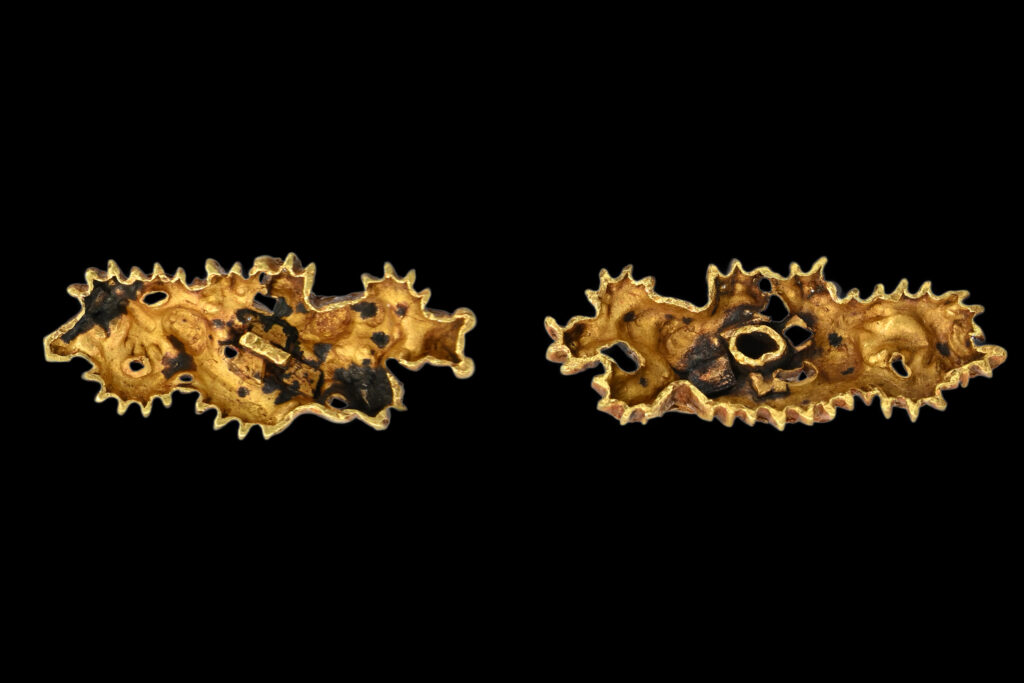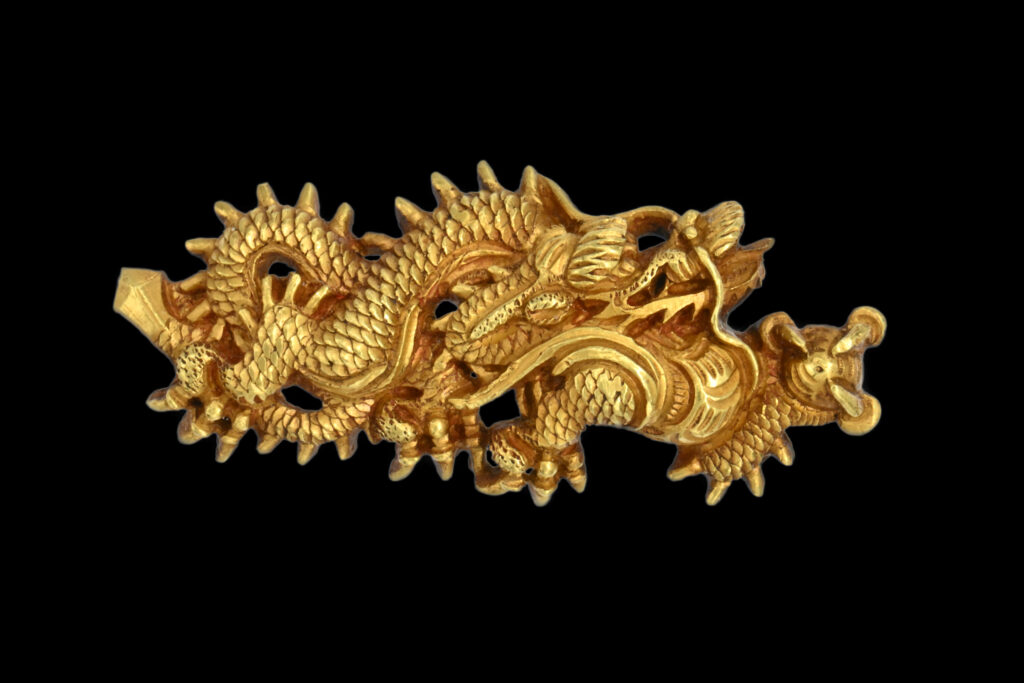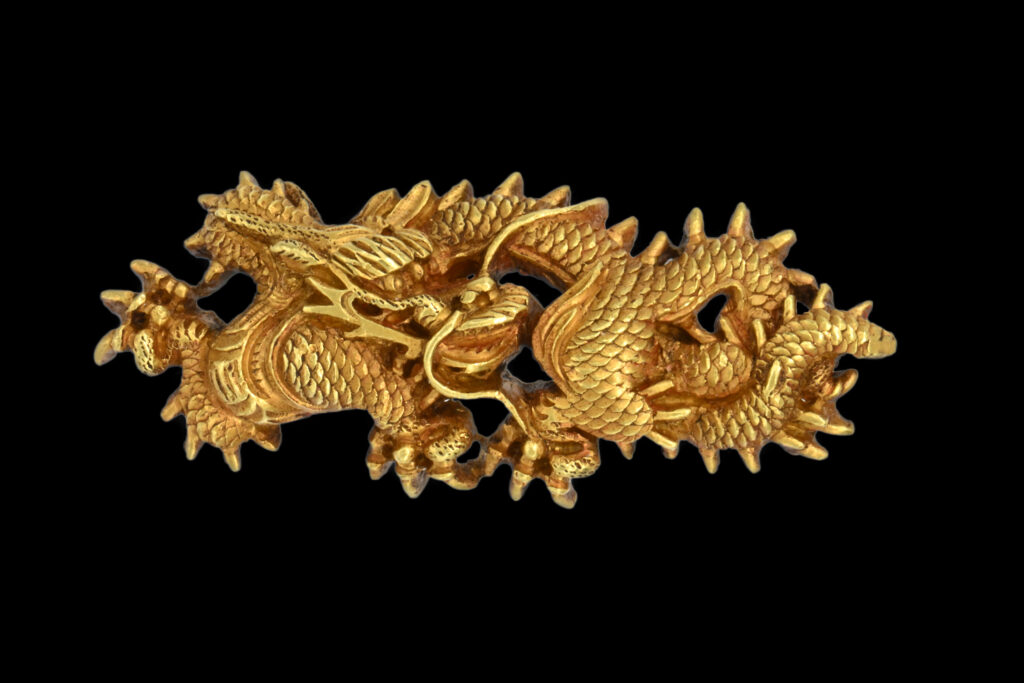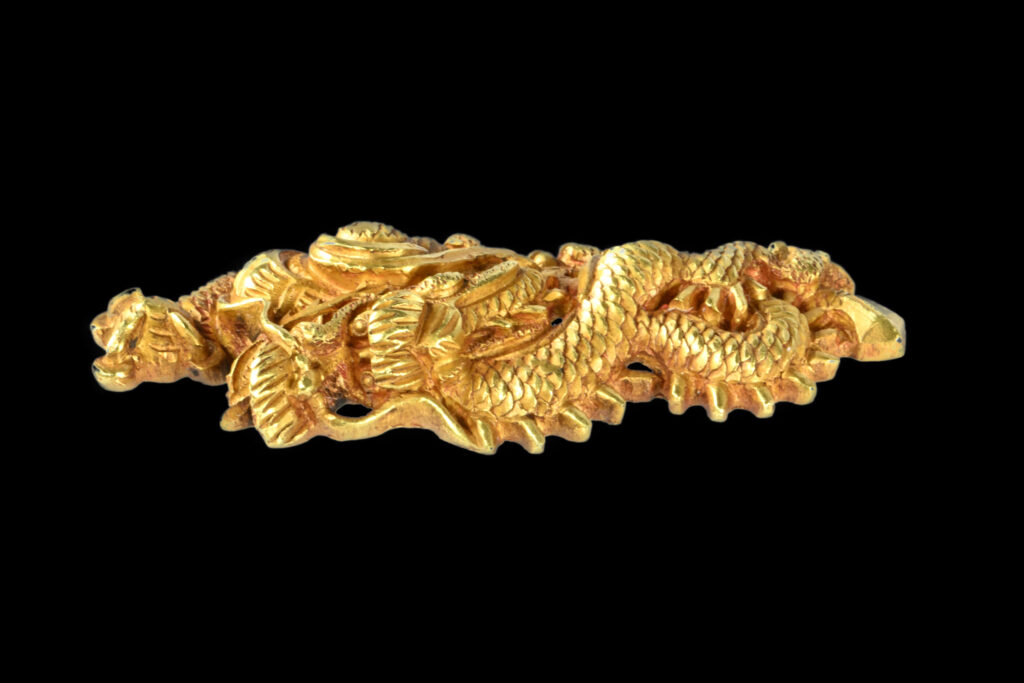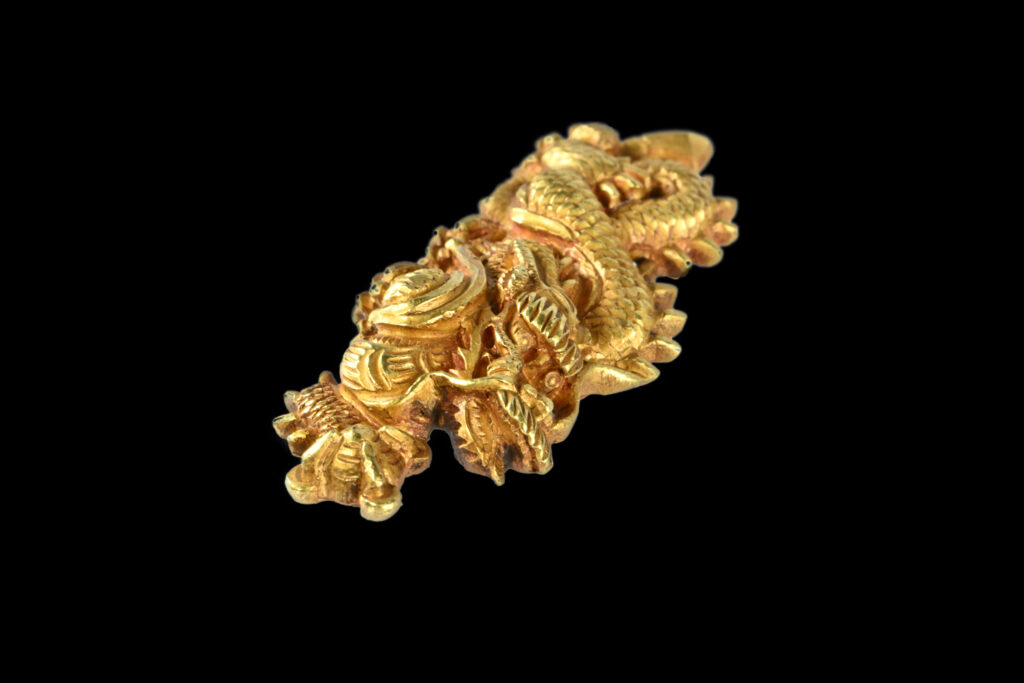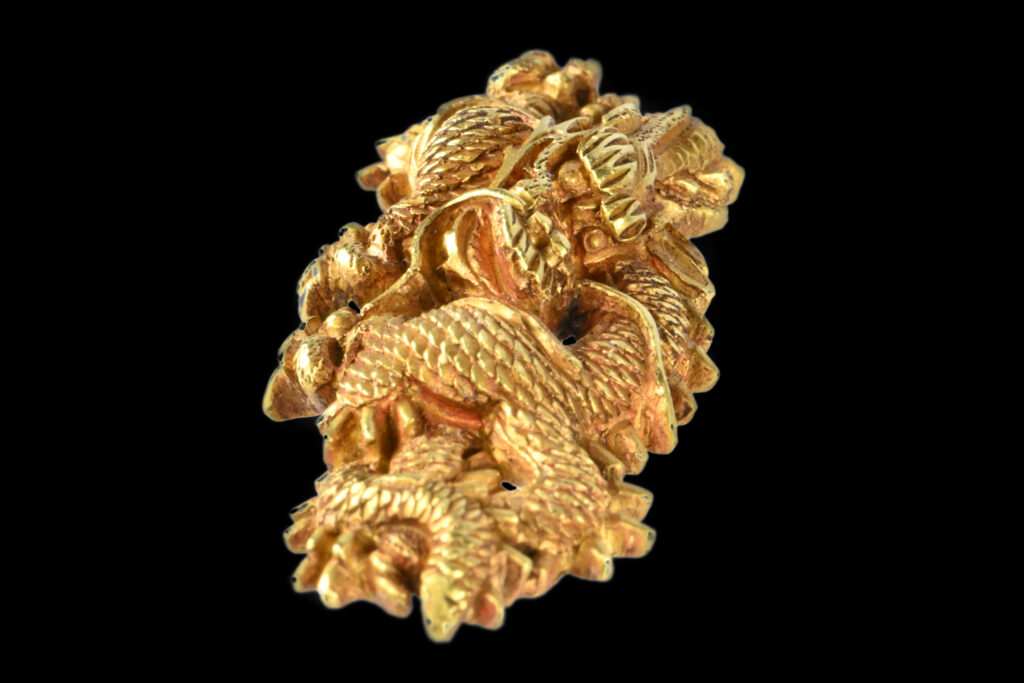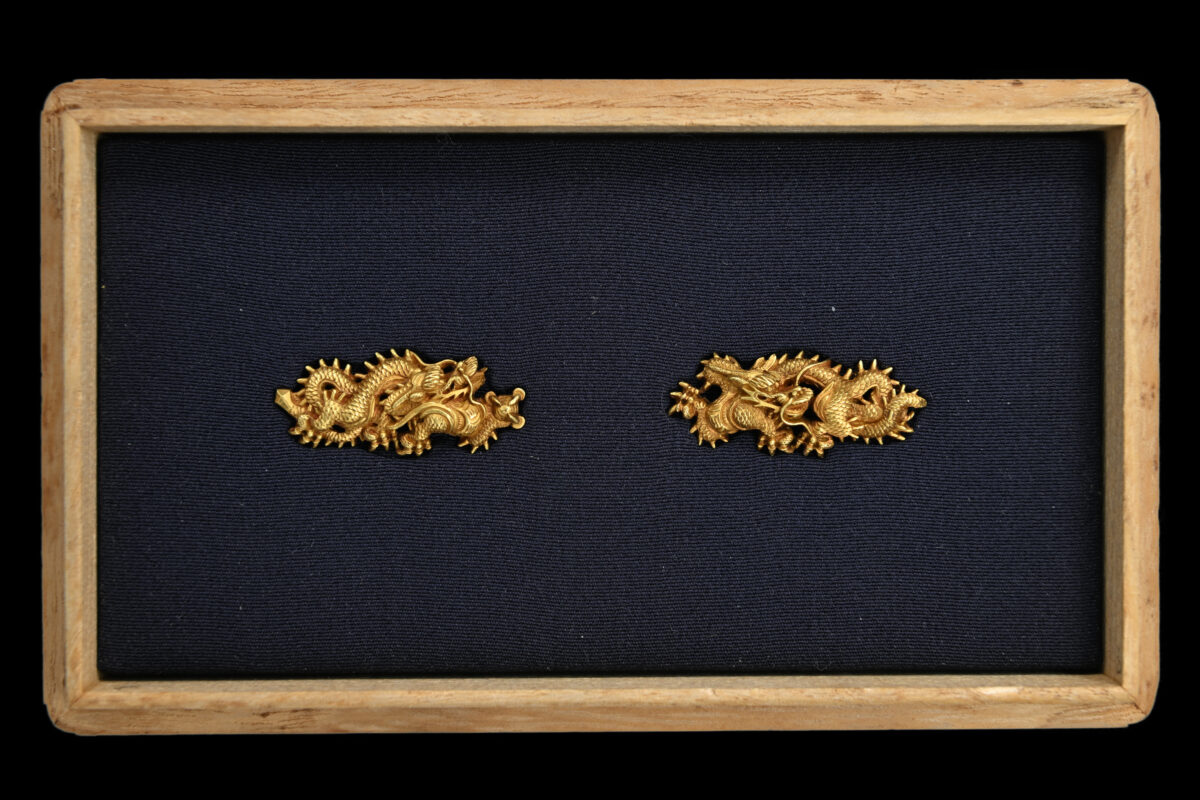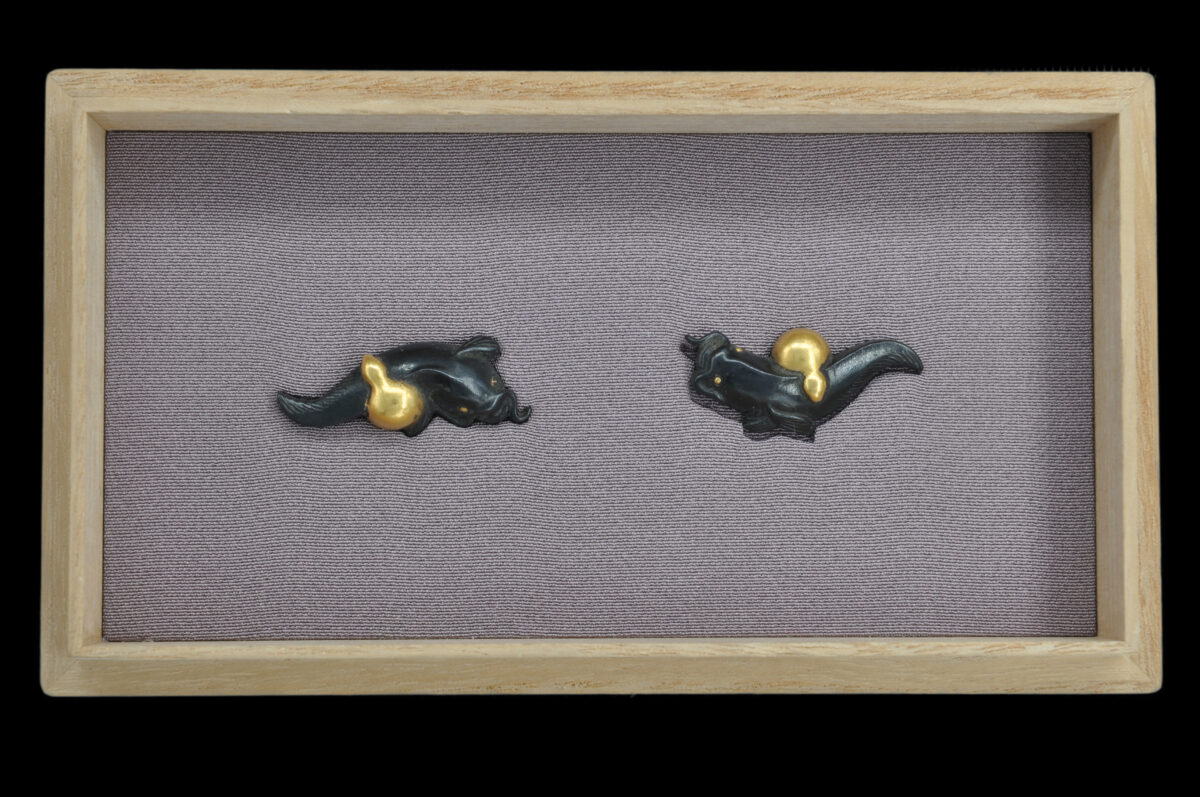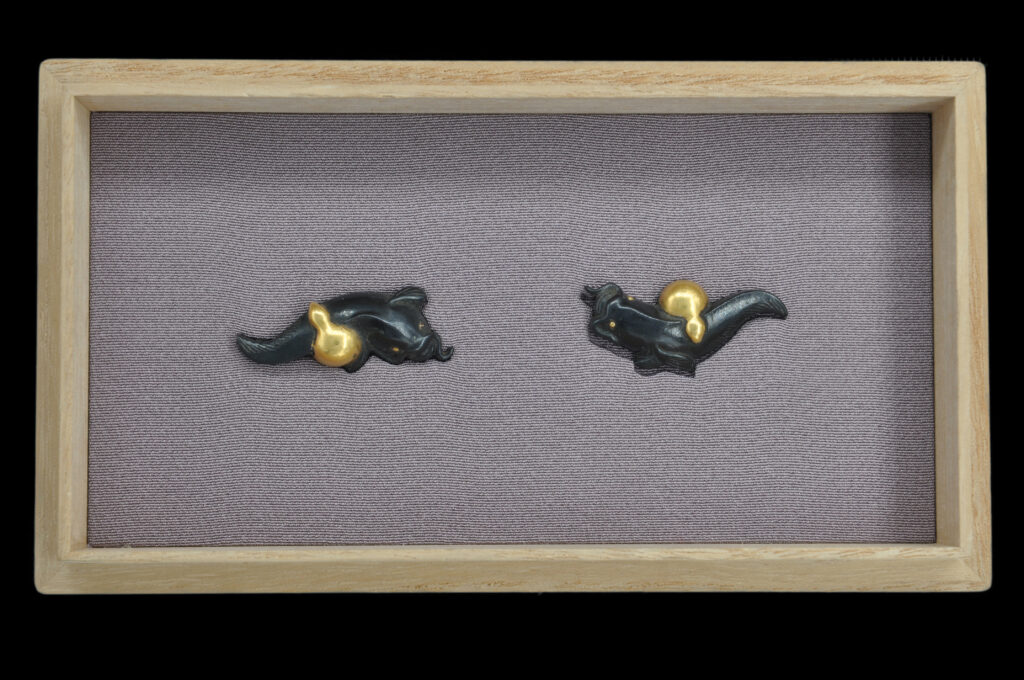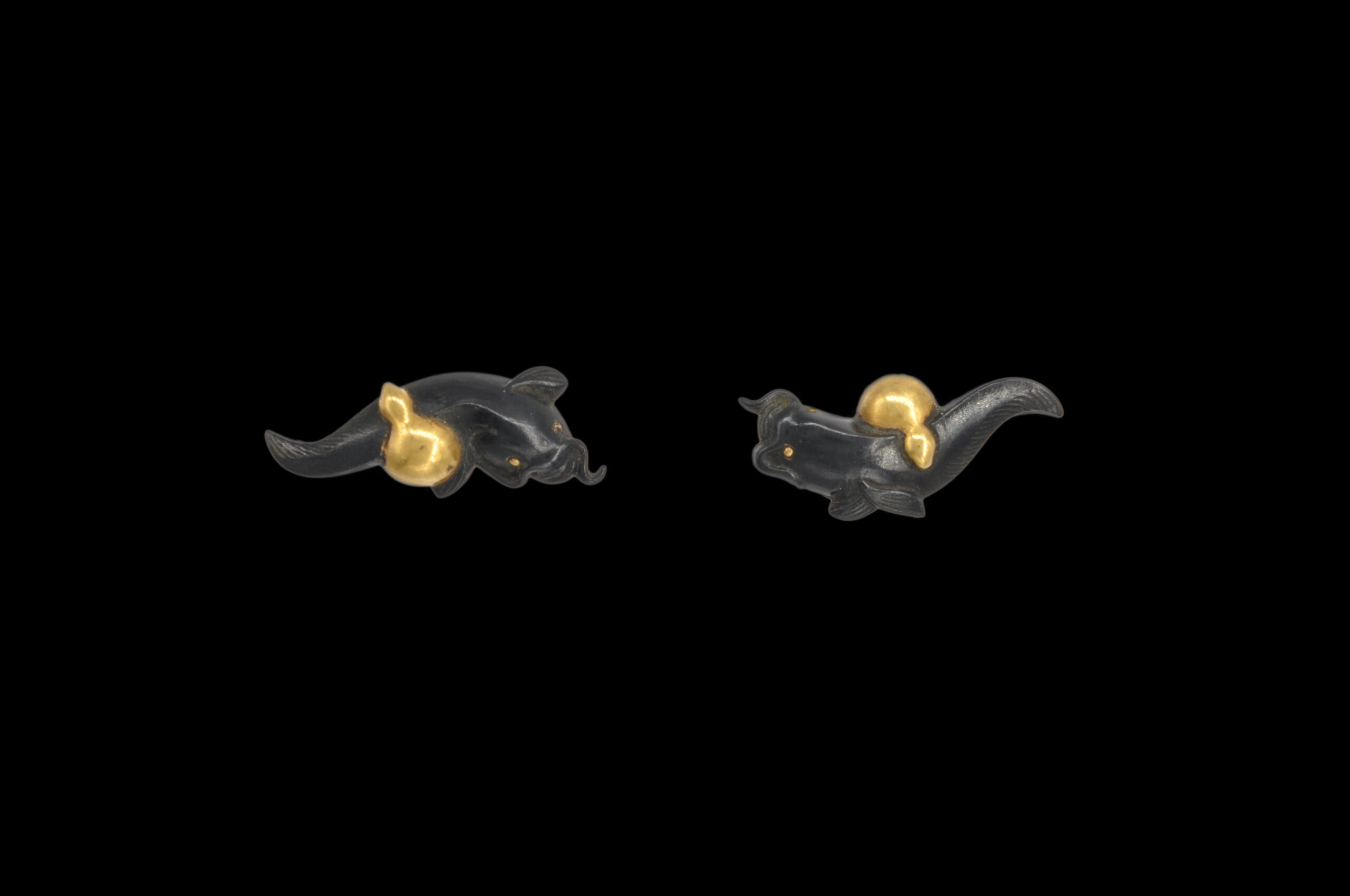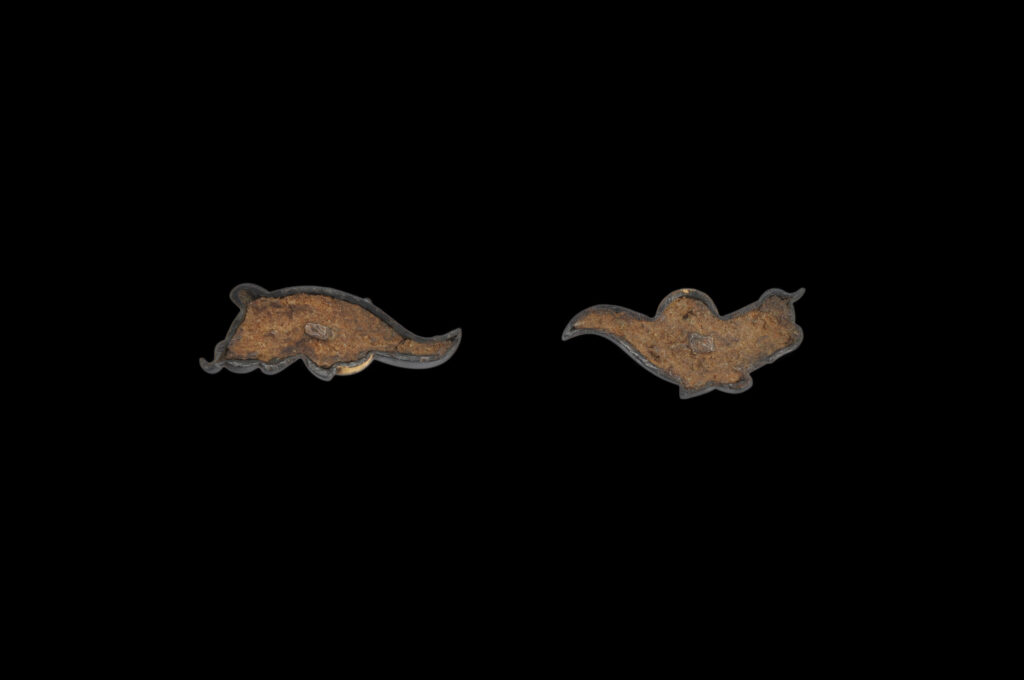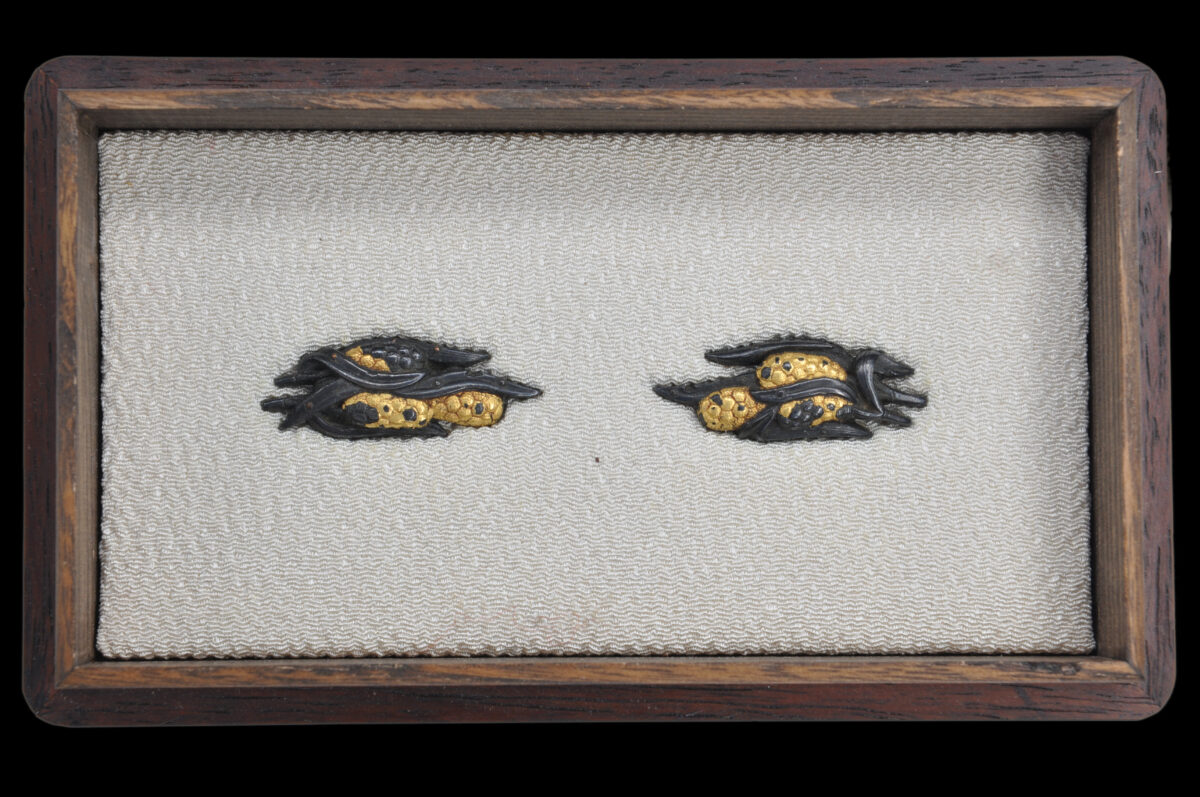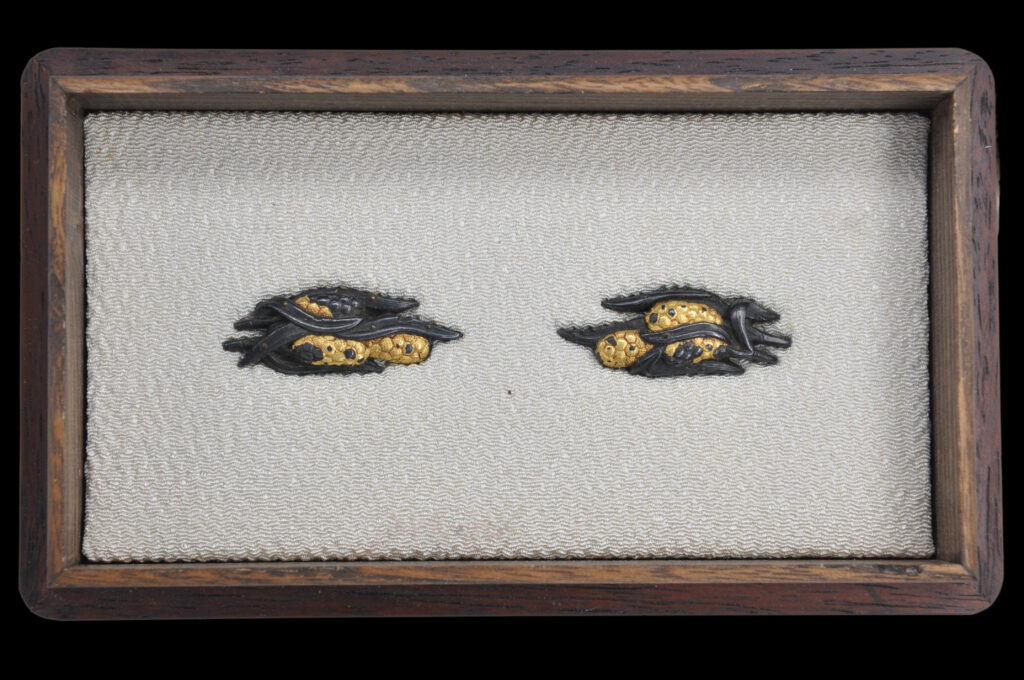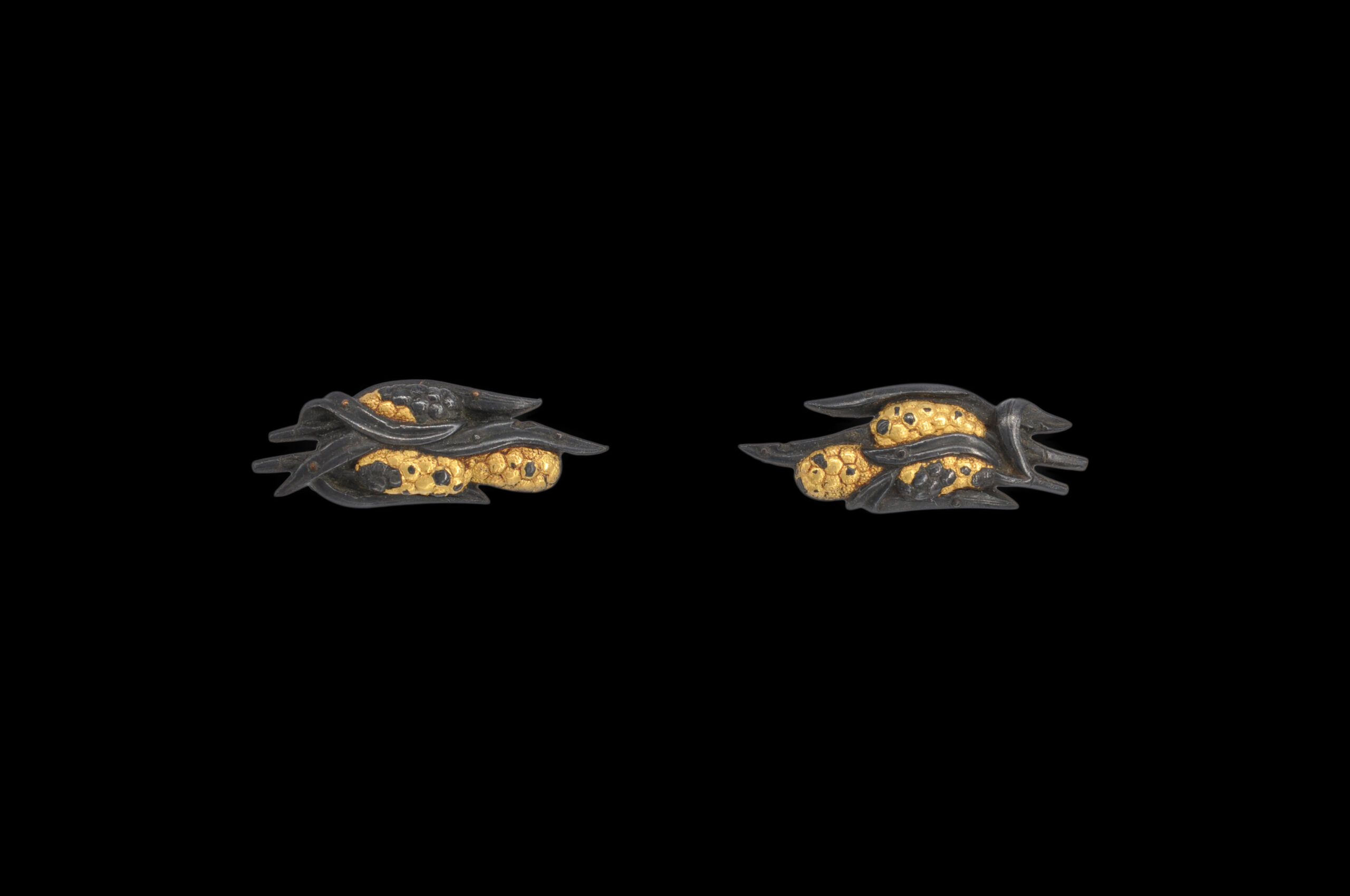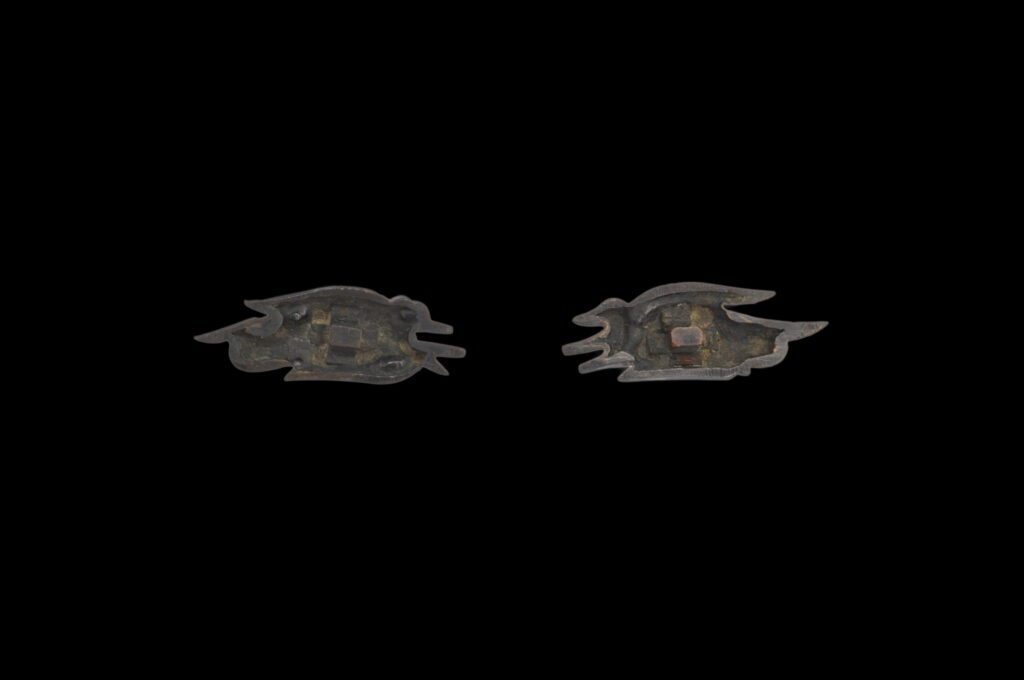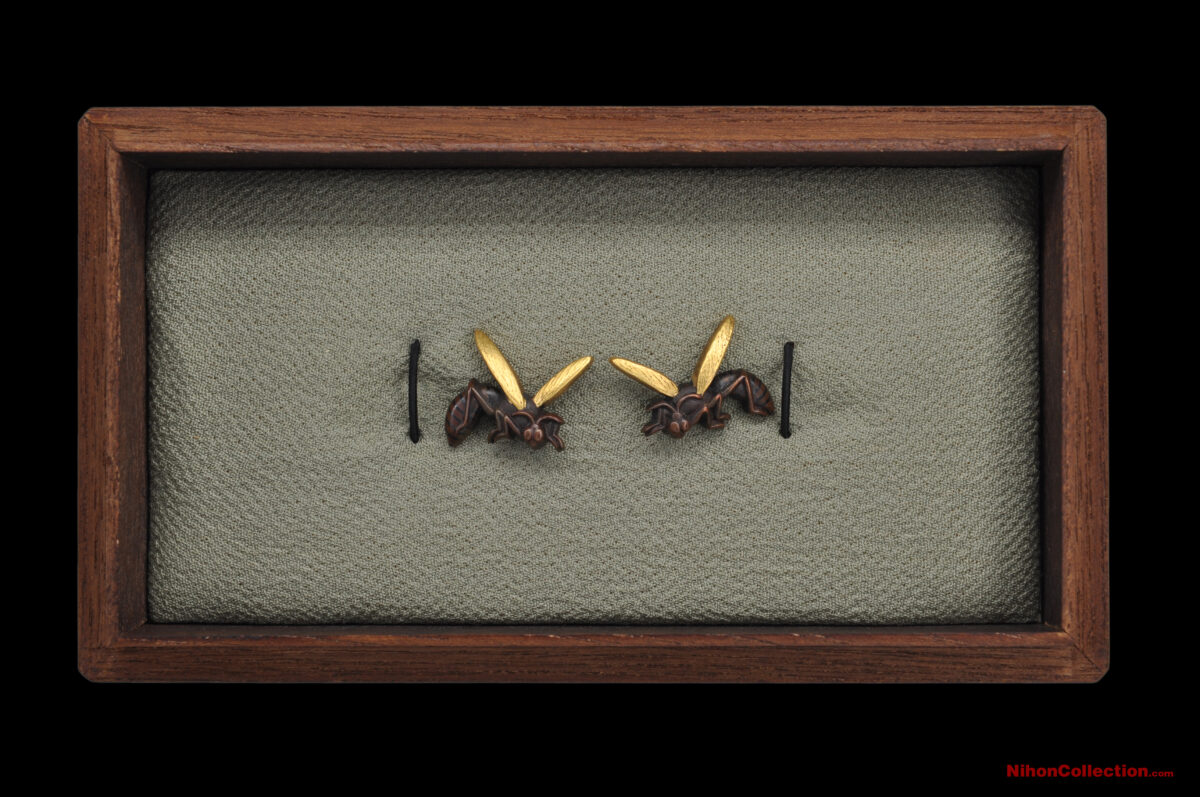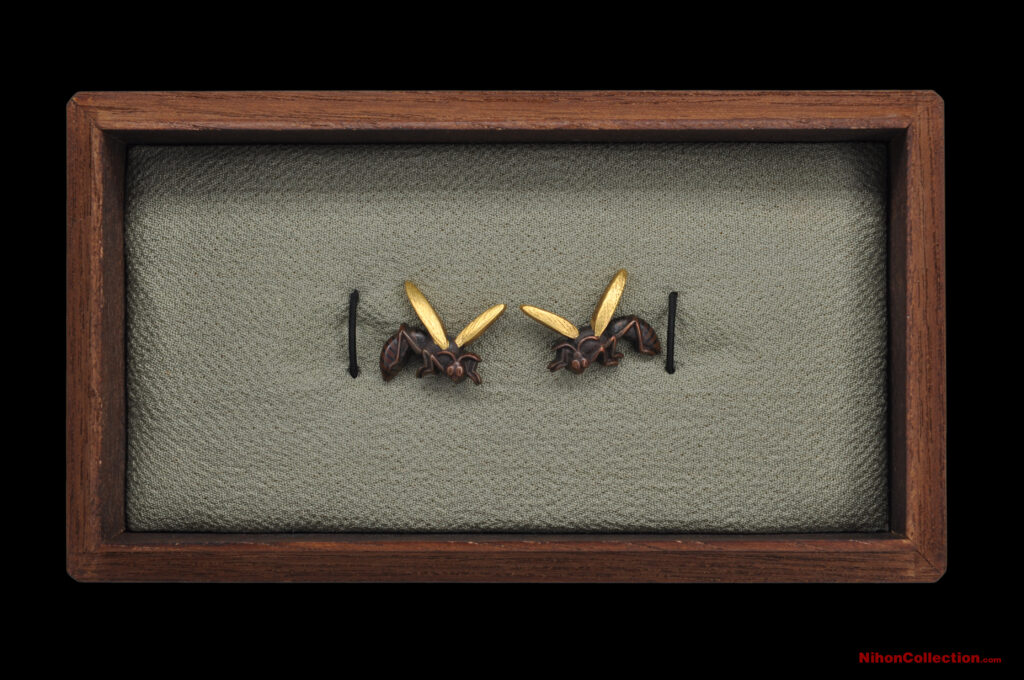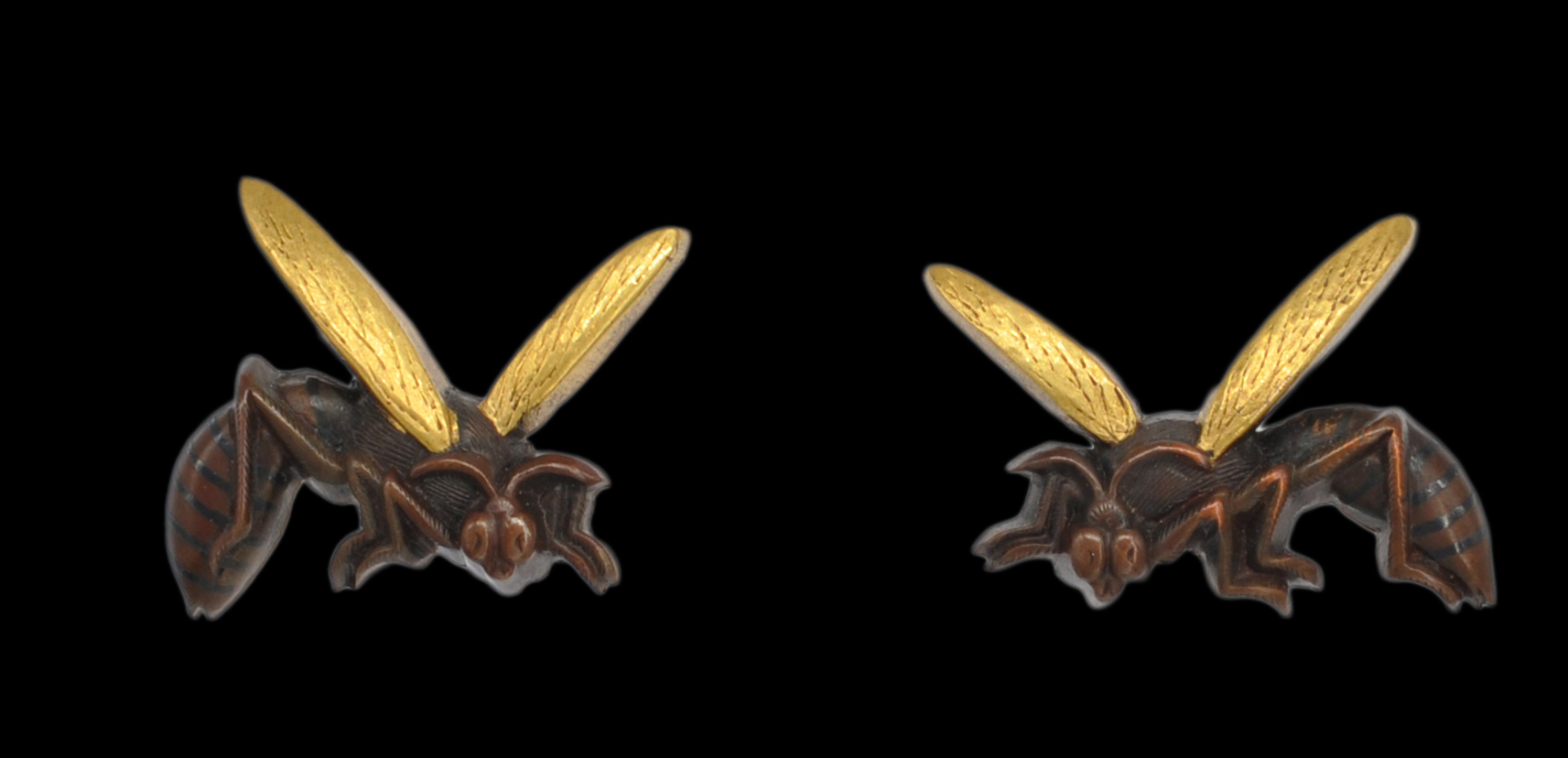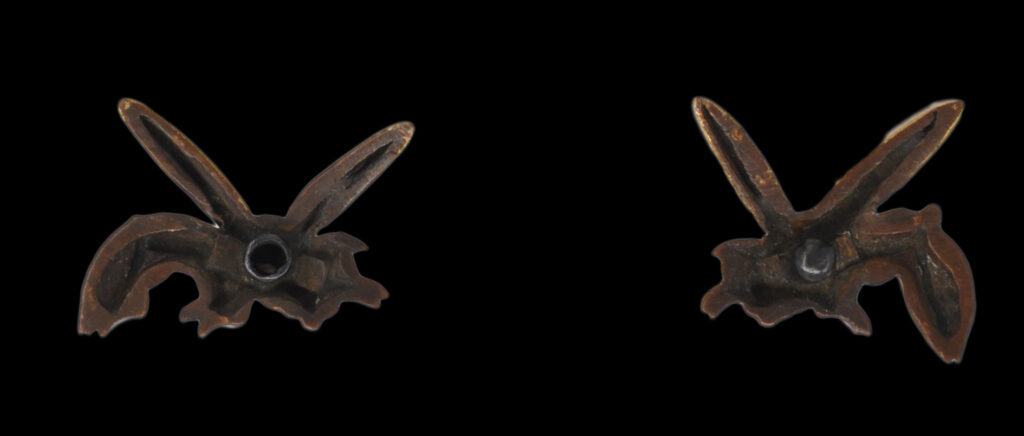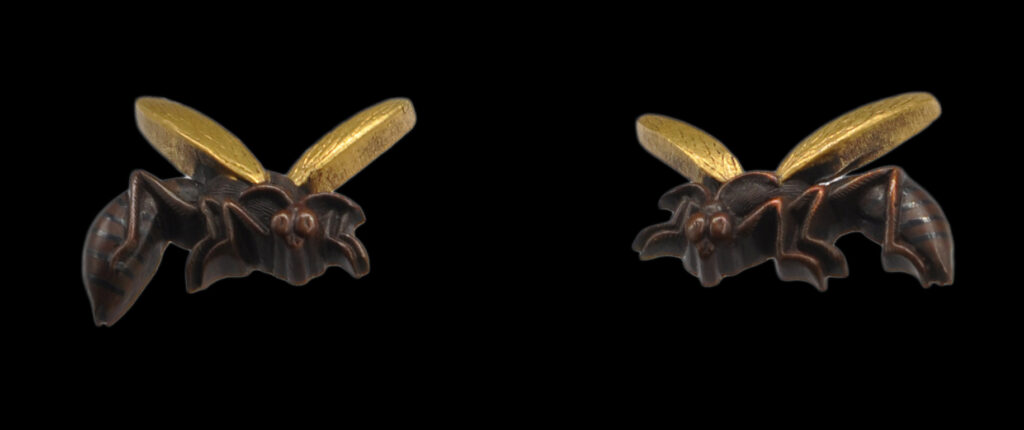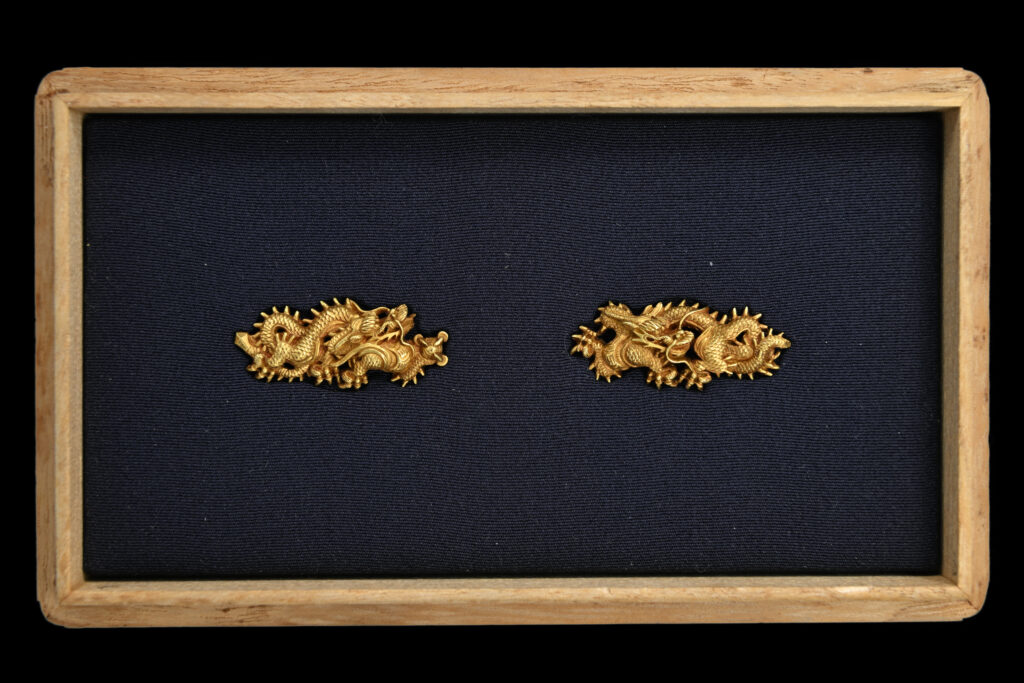
Menuki: Dragons
Signature/mei: mumei
School: Goto (mainline)
Material: gold
Era/jidai: early Edo
Dimensions left in mm: 32.2 x 14.6 x 5.3
Dimensions right in mm: 33.6 x 13.6 x 5.6
Custom made kiri box
NBTHK: Hozon (2009) – Mumei Goto (Momoyama)
Price: €4100/ $4500 / ¥650000
The term “Momoyama-Goto” covers the fourth to seventh generation of the main Goto line, also called the Shirobei line. So here we see menuki that may have been made by Goto Kojo (4th), Goto Tokujo (5th), Goto Eijo (6th) or Goto Kenjo (7th).
What makes this menuki with dragons so interesting and sets it apart from other dragon motifs is the very fine, accentuated carving of the two dragons, which is very detailed. If we just look closely at the number of scales (or casing), these two are much better and more detailed compared to other Kaga Goto or even mainline Goto designs.
These menuki are also slightly higher compared to other major works, which makes the dragon appear more alive. The two appear also very lively due to the deep carvings, perhaps not as austere as one would expect from a mainline Goto design. It’s really fun to watch as the dragon sticks out its tongue and holds the captured pearl in its claws. What is impressive is that these menuki, which were certainly mounted (recognizable by the slightly rubbed highest point), are in such great condition and all details such as spines, claws, tail and tongue are still preserved.
Further research is required for these menuki to further pinpoint the Goto master who made them. Since it is now the Year of the Dragon, it is time to release the dragon into the wild.
